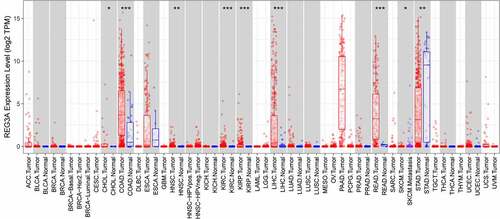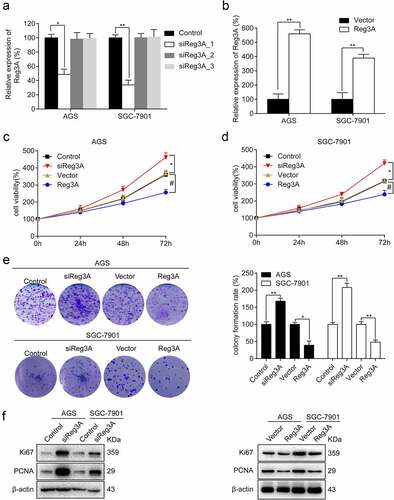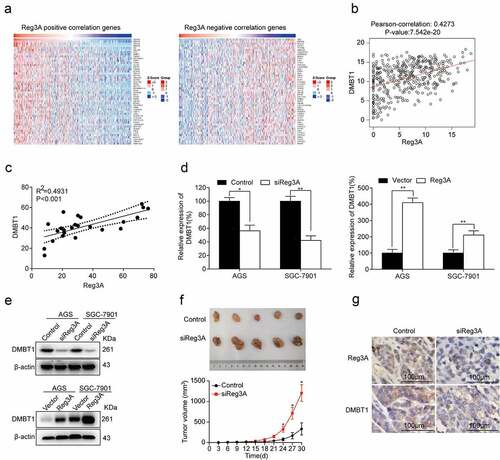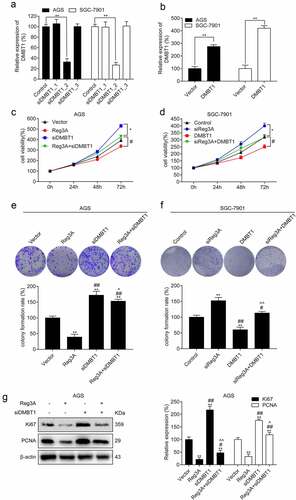Figures & data
Figure 1. Reg3A expression in cancers in tumor immune estimation resource database. *, P < 0.05; **, P < 0.01; ***, P < 0.001

Figure 2. Reg3A expression between tumor and adjacent tissues. (a) Reg3A mRNA expression in GC patients. Reg3A (b) mRNA and (c) protein expression in GC cells. (d) The correlation between Reg3A and T stage, M stage in TCGA datasets. (e) Survival analysis of Reg3A in GC; *, P < 0.05; **, P < 0.01

Table 1. Association of Reg3A mRNA expression with clinicopathologic features in GC
Figure 3. Reg3A inhibits cell proliferation in GC cells. Reg3A was (a) knocked down and (b) overexpressed. Reg3A regulates (c, d) cell viability, (e) clone formation, and (f) proliferation-related proteins. *, # P < 0.05; **, ## P < 0.01

Figure 4. Reg3A regulated DMBT1 expression in GC. (a) Reg3A positive and negative correlated genes were required from LinkedOmics. (b) Reg3A was associated with DMBT1 in the TCGA database (P < 0.001). (c) The correlation between Reg3A and DMBT1 in GC patients. Reg3A regulates DMBT1 expression in (d) mRNA and (e) protein levels. (f) Xenograft tumorigenesis assay with AGS and AGS_siReg3A cells. (g) The expression levels of Reg3A and DMBT1 proteins in xenograft tumor tissues. *, P < 0.05; **, P < 0.01

Figure 5. DMBT1 is downregulated in GC. (a) CHAT revealed the association between DMBT1 and hallmarks of cancer. (b) DMBT1 mRNA expression in GC cells. The correlation between DMBT1 and (c) T stage, (d) M stage in TCGA datasets. (e) Survival analysis of DMBT1 in GC. *, P < 0.05; **, P < 0.01

Figure 6. Reg3A regulated cell proliferation via DMBT1 in GC cells. DMBT1 was (a) knocked down and (b) overexpressed. Functions of Reg3A inhibiting cell viability (c) and clone formation (e) were reversed by DMBT1 siRNA. Functions of Reg3A siRNA promoting cell viability (d) and clone formation (f) were reversed by DMBT1. (g) Functions of Reg3A inhibiting Ki67 and PCNA expression were reversed by DMBT1 siRNA. *, P < 0.05 or **, P < 0.01 vs control or vector group; #, P < 0.05 or ##, P < 0.01 vs Reg3A or siReg3A group; ^, P < 0.05 or ^^, P < 0.01 vs siDMBT1 or DMBT1 group

